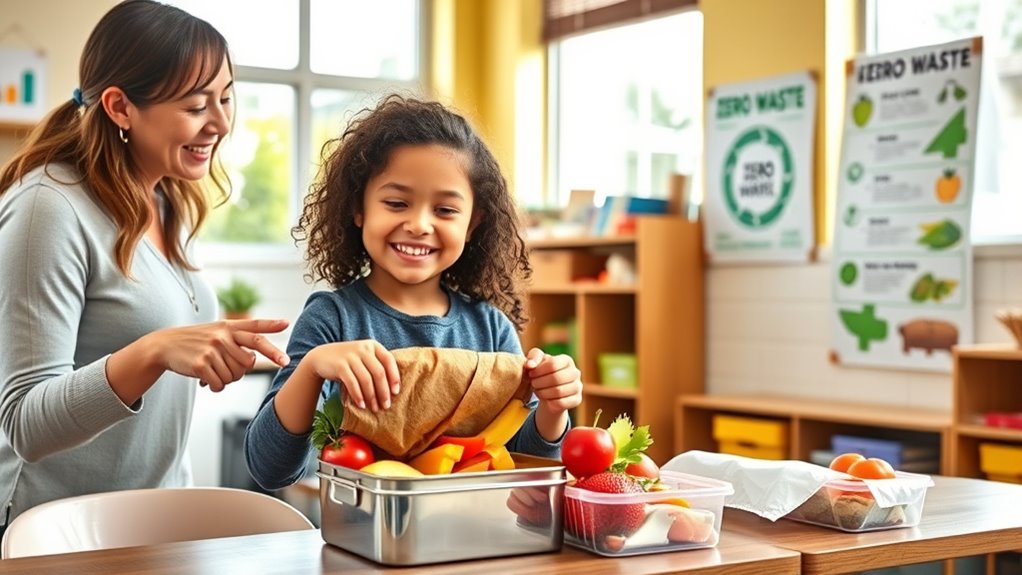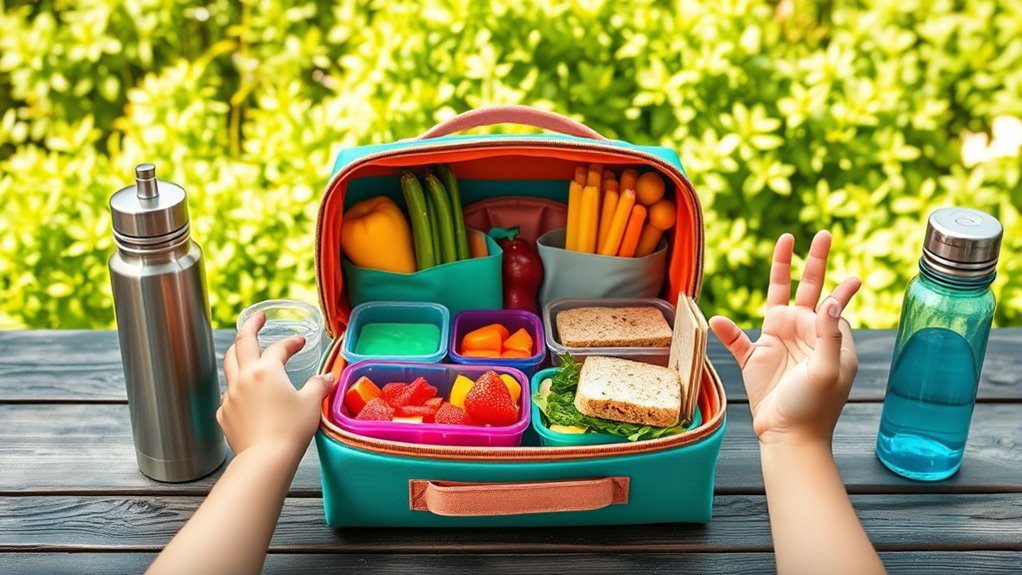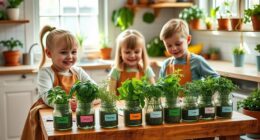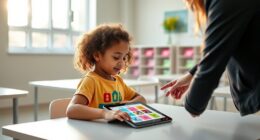Teaching kids about zero waste lunch boxes helps them adopt eco-friendly habits early on, reducing reliance on single-use packaging and plastic bags. You can involve them in packing, choosing reusable containers, and making snacks at home. Engaging children with colorful containers and fun activities keeps their interest. By encouraging responsibility and mindful choices, you foster long-term sustainability awareness. Keep exploring to discover more ways to make eco-conscious lunches a fun part of their routine.
Key Takeaways
- Involve kids in choosing and packing their reusable lunch containers to foster ownership and understanding.
- Teach children about the environmental impact of waste and the benefits of zero waste lunch habits.
- Use colorful, engaging containers and labels to make packing fun and educational.
- Demonstrate proper cleaning and maintenance of reusable containers to instill responsibility.
- Encourage kids to select healthy, homemade snacks stored in eco-friendly, reusable packaging.

Teaching kids about zero waste lunch boxes is an important step toward instilling sustainable habits early on. When you show them how to make eco-friendly choices, you’re helping shape their mindset for a greener future. One of the key aspects of this is introducing sustainable snacks. Instead of packaged, single-use treats, opt for homemade options like fruit slices, nuts, or veggie sticks that can be stored in reusable containers. These containers are essential because they eliminate the need for plastic bags and disposable packaging, making it easier for your child to carry their lunch without generating waste. When shopping, choose durable, washable containers that can withstand daily use and are easy to clean. This not only reduces waste but also teaches your child to value quality and longevity.
Encourage your kids to participate in choosing and packing their lunch. When they get involved, they’re more likely to understand the importance of reducing waste and making mindful choices. Show them how to portion snacks into reusable containers, which helps control portion sizes and prevents unnecessary waste. For example, instead of giving them a pre-packaged snack, you can fill a small container with trail mix or cut-up fruit. Explain that using these containers reduces the amount of trash they generate and is better for the environment. As they grow more comfortable with this routine, they’ll develop a sense of responsibility and pride in their contributions to sustainability.
Make it fun by involving your kids in creating their own zero waste lunch kits. Use colorful reusable containers and let them pick their favorite sustainable snacks. This makes the process engaging and reinforces positive habits. Teach them to pack everything in a way that minimizes waste—filling containers carefully and avoiding excess packaging. As they learn to be more mindful, they’ll become advocates for reusable solutions, both at school and elsewhere. Demonstrating how to wash and care for reusable containers also instills good hygiene habits and prolongs the life of these eco-friendly tools. Promoting sustainable habits from an early age ensures they carry these practices into all areas of their lives.
Frequently Asked Questions
How Can I Teach My Child About Composting Their Lunch Waste?
You can teach your child about composting their lunch waste by showing them how it reduces trash and benefits the environment. Explain recycling habits and how composting turns food scraps into nutrient-rich soil. Involve them in compost bin setup and daily waste sorting, making it fun and interactive. Emphasize the composting benefits, like helping plants grow and reducing landfill waste, so they understand their positive impact.
What Are Eco-Friendly Alternatives to Plastic Sandwich Bags?
You can switch to eco-friendly alternatives like reusable containers and beeswax wraps instead of plastic sandwich bags. Reusable containers are durable, easy to clean, and perfect for snacks or sandwiches, reducing waste considerably. Beeswax wraps are a great natural option for wrapping sandwiches and keeping food fresh. These alternatives help teach your kids about sustainability and reduce their environmental impact, making lunchtime greener and more responsible.
How Do I Involve Kids in Choosing Sustainable Lunchbox Materials?
A stitch in time saves nine, so involve your kids early to foster sustainable habits. Let them pick eco-conscious shopping options and explore different sustainable lunchbox materials together. Show them the benefits of recycling habits and how each choice impacts the environment. Engaging them in research and decision-making makes sustainability fun and meaningful, empowering them to become eco-aware individuals who care about the planet from a young age.
Are There Fun Ways to Teach Kids About Reducing Food Waste?
You can make reducing food waste fun by using interactive games and storytelling activities. Create a game where kids sort food scraps into compost, recycling, or trash, turning it into a learning adventure. Share stories about animals and plants benefiting from less waste, inspiring them to think differently. These engaging methods help kids understand the importance of reducing food waste while keeping the experience enjoyable and memorable.
How Can Schools Support Zero Waste Lunch Initiatives?
You can support zero waste lunch initiatives by integrating school garden programs and recycling education initiatives into the curriculum. Encourage students to bring reusable containers and utensils, and create composting stations for food scraps. Organize workshops on recycling and composting, and involve students in tending the garden to teach sustainable practices. These efforts promote environmental responsibility, making zero waste habits part of everyday school life.
Conclusion
By teaching your kids about zero waste lunch boxes, you’re planting seeds of change that can grow into a greener future. Think of each reusable container and mindful choice as a drop of water in an ocean of impact. When your children embrace these habits, they become waves of positive change, shaping a cleaner planet for themselves and generations to come. Together, you’re creating a ripple effect that can transform the world, one lunch at a time.








